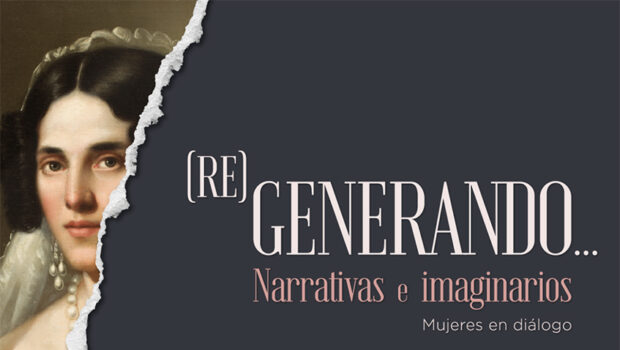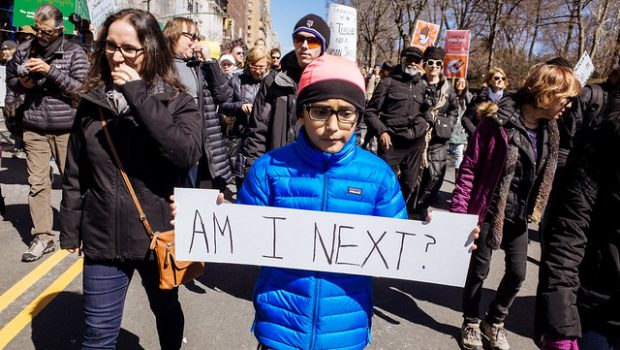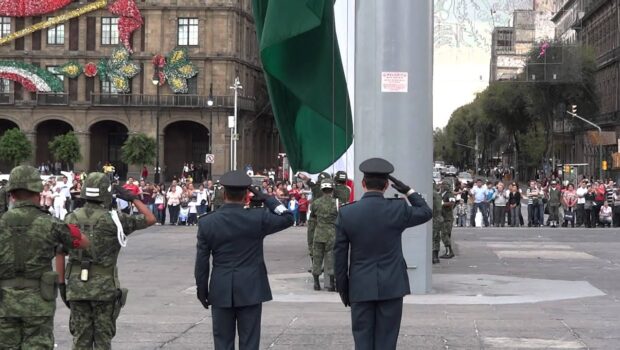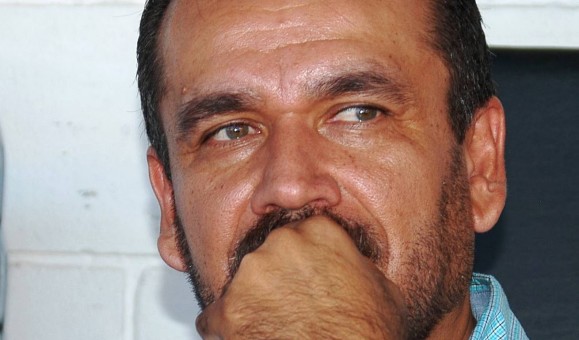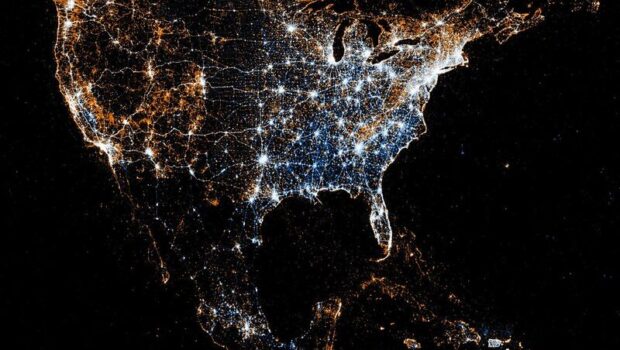Conversation with Monica Mayer
Miriam Mabel Martínez
Where are all the women in Mexico’s art collections? Parting from this query, Museo Kaluz launched a review of its own collection with the objective of questioning art narratives from a gender perspective. The result is (Re)generating… narratives and imageries. Women in dialogue, in which we are invited to reflect on the work of women artists through a dialogue with the collections of contemporary artists, collectors, and other museums.
Curated by the renowned feminist art historian and academic Karen Cordero Reiman, the exhibit is presented as a point of departure to interrogate and reimagine art history as well as possible futures for Mexican culture and society. It is, at the same time, an effort to question and dismount some of the hierarchical relationships implicit in our culture and art system.
The following conversation between Miriam Mabel Martínez and Mónica Mayer, two contemporary artists whose work is featured in the show, forms part of the catalogue for the exhibition which will be open to the public through April 30, 2023.
*
Run, See, and Tell . Does the work of female artists contribute to transforming Mexico?
Mónica. I’ll start with a confession: The idea that art contributes to transforming Mexico or society makes me feel uncomfortable. I accept that everything we do as people affects our environment. I also understand that those of us who work in this field contribute to the definitions of art, to its themes, techniques, forms of production, and distribution. Accordingly, we contribute to culture, which is the essence of societies. However, I know that the artistic process is a strange and complex thing that we pour all of our experiences, reflections, yearnings, and desires into, and that there, using the tools we have available to us, we produce something. Often, we don’t know what this work will be or what will come of it because we have to place it in different contexts…and sometimes they are generous, but others are rather treacherous. To top it all off, evaluating social transformations is nearly impossible. So, facing such uncertainty and seeing that there are pieces by Lana Desastre [Wool Disaster] in this exhibit that I love, such as Sé-Nos, I’ll ask, do you all do your work to transform Mexico and, if so, what are you seeking to transform?
Miriam. When I met my fellow members of Lana Desastre, especially when I had my first encounter with Annuska Angulo, I started untangling ideas and actions, and then I understood how much knitting and crocheting had transformed me. I learned to knit and crochet around the same time that I learned to read and write. Maybe that’s why I brought them all together into one. Without realizing it, one day, I found myself interwoven in other narratives like those of our collective. What unites us is a passion for making and inhabiting public spaces—this has been our driving force. Outside, we have come across many individual inner-worlds that, more than transforming us, have brought us together, as if we were a blanket like those that, in the collective imaginary, only grandmothers knit. And it has been in the process of our pieces that we have found ourselves transformed. I don’t know if we have transformed something. What I do know—because I have seen it and sensed it in the multiple knit and crochet sessions that we’ve held—is that the simple act of being together, listening to each other, and accompanying each other is a transformation in itself. I don’t know if I answered your question, but another one comes to mind: Do you believe transformation should be conceived for the future or acted on in the present?
Mónica. Yes, you answered it. First, we change ourselves and transform our immediate surroundings by creating networks with other women. For me, this seems paramount, because we generally think of art as the finished products and not as the processes that bring them into existence, which are transformative on many levels. We need to broaden the perspective on what we consider to be art, on who can make art, on our relationship with cultural institutions, on how we position ourselves in public spaces or in political movements. Perhaps this is the meat of the matter of transformation in a broader social sense.
Ever since I first saw works by painters like Lilia Carrillo and Cordelia Urueta, I started growing as an artist. They let me understand form, color, composition, and movement in another way. There are transformations on a social level, but they also come about from our contributions to art itself. But your question is very interesting to me. I think that, as a feminist artist, our efforts are like a three-dimensional game of tic-tac-toe. We must change the narratives of the past that made us invisible or considered that what we did as women was less relevant (for example, the divisions between art and handicrafts, the little importance that has been given to works using techniques from the family of knitting, crocheting, and weaving in general, and so on). We must act in the present, and we must think toward the future, to form ties with the youngest artists and leave traces of our work so they don’t make us invisible so easily again. This means leaving our mark within publications, creating organizations, changing the narratives, and whatever else might present itself. From the viewpoint of art, many of us imagine another society as artists. In this way, I ask myself and I would ask you, will imagining in itself be a way of inhabiting the world and transforming it?
Miriam. As women, we have been tasked with the job of imagining—we are the dreamers. Personally, I don’t want to imagine myself with the life mission of being the mother of fantasy. For me, imagining is doing, and it is also the effect of observing. We observe what happens and, as you say, the processes that bring things into existence. There, in that present tense that is being built day by day, is where imagination lies for me.
How does imagination turn into ideas? When I see the work of Cordelia Urueta, I can make out a world that has already been transformed. The same thing happens for me with the work of Lilia Carrillo. What did they imagine? Did they imagine? I see their pieces and, like the pieces by Mariana Gullco, what I envisage are many imaginations that are not entangled, but that are interweaving ideas, concepts, flaws, thoughts, proposals, actions, questions, emotions, visions, contributions, theories, formulas. This, I believe, is how we imagine as women.
Perhaps in the patriarchal world it is more convenient to shut ourselves up in the fantasy of watching ourselves imagine other idyllic worlds rather than seeing ourselves create with aggression and determination in the concrete world. Women will no longer settle, if we ever have, for spinning illusions. We weave together ties, networks, stories, processes just as our grandmothers and great grandmothers and so on have done. I think that cracking the codes of the collective imaginaries that come before us to spin them into our present is what transforms us. We should not separate ourselves out from these other imaginations that—whether they are different from or similar to our own—state and reflect a present. Imagining is an action, and the action is happening at this very moment. And I’ll ask you, does one imagine outwardly or inwardly?
Mónica. I don’t know if one imagines outwardly or inwardly, but it’s clear to me that it is impossible to transform the outer world if there is not an in-depth process of questioning and inner change. Over my decades as a feminist, I’ve always said that it has been harder for me to get rid of the cobwebs of internalized oppression as a woman than to fight for the demands of the movement. The bombardment about how we supposedly must be, think, feel, and act as women is so overpowering, and it cuts so deep, that it requires constant questioning.
Something I love about the work of many artists is that their pieces open my eyes and allow me to see beyond my own experience. For example, I love the works of artists—such as Carol Espíndola or Guadalupe Carpio y Barruecos—that put themselves in the center of their pieces, just the way they are, and look us right in the eyes. They are no one’s model. They speak in the first person. They imagine themselves and they make me see myself. Some take a different path and use objects to bring out what is inside.
For example, the work of María Izquierdo—with her peculiar perspective of objects—makes me feel uncomfortable, trapped. Or there’s the work of Magali Lara, in which objects have a life of their own and turn into characters. Now, this is on a subtle plane of existence, but in the face of the violence we experience as women in this country—with an average of ten feminicides a day—how can we react from the viewpoint of art? By denouncing? By creating images that embrace us? By imagining other ways of relating to each other?
Miriam. As an observer, I especially like to examine absences. What’s missing? What’s not being mentioned? What materials are not being used? What isn’t pictured in the photo? For me, these absences are denunciations. For Giorgio Agamben “the contemporary are they who firmly hold their gaze on their own time so as to perceive not its light but rather its darkness.” There’s a minority of us women who have been the darkness; a majority have been made invisible if not erased. And yet, in the acts of these few—barely perceptible in a patriarchal world—the reality of their present appears.
I think about the writer Inés Arredondo and her short story “La sunamita” [The Sunamite], which, for me, is one of the most truthful and crudest documents about systemic violence. And, on this same path, I’ve encountered the work of Manuela Ballester—what a way to portray solitude! Or Cuerpos vulnerables [Vulnerable Bodies] captured by Lorena Velázquez, the work Mujeres frente al tribunal [Women before the Court] by Carla Rippey, Cascos protectores [Protective Helmets] by Tania Candiani, or Magali Lara’s plates. There are not only diverse ways, mediums, formats, and techniques in them, but the traditional is the great absence. These pieces give voice to feminine universes. There is no status quo. What we see is these other women breaking free from the corset of the ideal woman. Idealization is not present, and neither is divinity or magic, but rather there are female bodies, flesh, entrails.
And, to me, these other ways of making art already seem like a denunciation. We denounce by saying that we want to use other tools, that our strategies are different, that—although they may not want to see us—we exist, we have names, we are. I am distressed by the feminicides—they can no longer be denied as they had been denied for decades and centuries.
As female artists, I believe we have always denounced the reality. I don’t know if we create images that embrace us, and I don’t know if, when we create, we imagine other ways of relating to each other either. What I do know is that, when we observe one another attentively, we are capable of following that imperceptible glimmer of light in the dark, which leads us to other sites to explore. This is how I came upon your work. Did you ever imagine that it would embrace so many of us?
Mónica. As a feminist artist, I have always wanted my work and that of other female artists to reach as far as possible. Yet, I never imagined the paths it would take and that works like El Tendedero [The Clothesline] would be adopted by many women as a tool for social struggle, even without knowing its origins and authorship. I never imagined it, but I love it. What I did understand from the start was the richness of working collaboratively and of creating networks. I don’t know if I imagined it, but I undoubtedly wished for it. It amazes me to see how my bonds with other women have been strengthened, and it’s something I’m incredibly pleased about. And I’ll end with the same question: Did you ever imagine that your work would embrace so many of us?
Miriam. I learned to knit and crochet and write simultaneously. Writing and working with yarn have been my way of telling stories, but knitting and crocheting have always involved a bond. By working with yarn in this way, I learned to share, and I learned the meaning of collective. Authorship does not exist. It doesn’t matter who invented the plain and purl stitches. What’s important is that anyone can replicate them to create anything from a garment to a theory. I grew up feeling like part of a secret guild. I felt fortunate and conspiratorial when, at a notions store or on public transportation, I would cross paths with another member of that knitters and crocheters club. Now that textile creations are also occupying the streets, I feel happy to participate in a movement that embraces us all, regardless of sex or gender, and that recovers our textile heritages as ways of thinking. As members of Lana Desastre, we never thought about what would happen. However, it has always been clear to us that, as knitters and crocheters, we are the next stitch for others. There is always a stitch before us and another one to come.
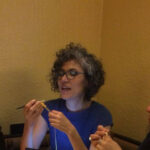 Miriam Mabel Martínez es escritora y tejedora. Aprendió a tejer a los siete años; desde entonces, y siguiendo su instinto, ha tejido historias con estambres y también con letras. Entre sus libros están: Cómo destruir Nueva York (Conaculta, 2005); los ebook Crónicas miopes de la Ciudad de México y Apuntes para enfrentar el destino (Editorial Sextil, 2013), Equis (Editorial Progreso, 2015) y El mensaje está en el tejido (Futura libros, 2016). Coordinó las antologías Oríllese a la izquierda y Mujeres (2019) y Mujeres. El mundo es nuestro (2021) ambas bajo el sello Universo de Libros. Forma parte del Colectivo Lana Desastre con el cual ha participado en “El Panal Monumental” (2017); un mural tejido para la Central de Abasto (2018); “Manta por la Sororidad” (2019) y “Data: Cambio Meta Tejido” (2019), entre otros. Pertenece al Sistema Nacional de Creadores de Arte.
Miriam Mabel Martínez es escritora y tejedora. Aprendió a tejer a los siete años; desde entonces, y siguiendo su instinto, ha tejido historias con estambres y también con letras. Entre sus libros están: Cómo destruir Nueva York (Conaculta, 2005); los ebook Crónicas miopes de la Ciudad de México y Apuntes para enfrentar el destino (Editorial Sextil, 2013), Equis (Editorial Progreso, 2015) y El mensaje está en el tejido (Futura libros, 2016). Coordinó las antologías Oríllese a la izquierda y Mujeres (2019) y Mujeres. El mundo es nuestro (2021) ambas bajo el sello Universo de Libros. Forma parte del Colectivo Lana Desastre con el cual ha participado en “El Panal Monumental” (2017); un mural tejido para la Central de Abasto (2018); “Manta por la Sororidad” (2019) y “Data: Cambio Meta Tejido” (2019), entre otros. Pertenece al Sistema Nacional de Creadores de Arte.
©Literal Publishing. Queda prohibida la reproducción total o parcial de esta publicación. Toda forma de utilización no autorizada será perseguida con lo establecido en la ley federal del derecho de autor.
Las opiniones expresadas por nuestros colaboradores y columnistas son responsabilidad de sus autores y no reflejan necesariamente los puntos de vista de esta revista ni de sus editores, aunque sí refrendamos y respaldamos su derecho a expresarlas en toda su pluralidad. / Our contributors and columnists are solely responsible for the opinions expressed here, which do not necessarily reflect the point of view of this magazine or its editors. However, we do reaffirm and support their right to voice said opinions with full plurality.
¿Dónde están las mujeres en las colecciones de arte en México? A partir de esta pregunta, el Museo Kaluz inició una revisión de su propia colección con el objetivo de cuestionar las narrativas del arte desde una perspectiva de género. El resultado es (Re)generando… narrativas e imaginarios. Mujeres en diálogo, con la cual la Colección Kaluz invita a reflexionar sobre el trabajo de mujeres artistas a través de un diálogo con acervos de otros museos, coleccionistas y artistas contemporáneas.
Curada por Karen Cordero Reiman, reconocida historiadora del arte feminista y académica, la exposición está planteada como un punto de partida para interrogar y reimaginar la historia del arte, así como los futuros posibles de nuestra cultura y sociedad. Es, al mismo tiempo, un esfuerzo por cuestionar y desmontar algunas de las relaciones jerárquicas implícitas en nuestra cultura y sistema artístico.
El siguiente diálogo entre Miriam Mabel Martínez y Mónica Mayer, dos artistas contemporáneas cuya obra forma parte de la muestra, aparece en el catálogo para esta exhibición que estará abierta al público hasta el 30 de abril de 2023.
*
Corre, ve y dile. ¿La obra de artistas mujeres contribuye a transformar a México?
Mónica. Empiezo por una confesión: la idea de que el arte contribuye a transformar a México o a la sociedad me incomoda. Asumo que todo lo que hacemos las personas afecta nuestro entorno. También entiendo que quienes nos dedicamos a este medio aportamos a las definiciones del arte, a sus temáticas, técnicas, formas de producción y distribución. En ese sentido, contribuimos a la cultura, que es la esencia de las sociedades. Sin embargo, sé que el proceso artístico es un bicho raro y complejo en el que volcamos nuestras experiencias, reflexiones, anhelos y deseos; y que ahí, utilizando las herramientas que tenemos a nuestra disposición, producimos algo. Frecuentemente no sabemos qué será o cómo resultará esta obra porque hay que insertarla en distintos contextos… y estos a veces son generosos, y otras bien traicioneros. Para colmo, evaluar las transformaciones sociales es casi imposible. Entonces, ante tanta incertidumbre y viendo que en esta exposición hay piezas de Lana Desastre que me encantan, como Sé-Nos, te pregunto ¿ustedes hacen su trabajo para transformar a México y, de ser así, qué es lo que buscan transformar?
Miriam. Cuando conocí a mis compañeras de Lana Desastre, en especial cuando me encontré a Annuska Angulo, fui desenmarañando ideas y haceres, entonces entendí cuánto me había transformado el tejido. Aprendí a tejer casi al mismo tiempo que a leer y a escribir, quizá por eso uní las tres acciones en una misma. Sin darme cuenta, un día me descubrí entretejida en otras narrativas como las de nuestra colectiva. Lo que nos une es una pasión por hacer y habitar el espacio público: ese ha sido nuestro impulso. Allá afuera nos hemos topado con muchos adentros individuales que más que irnos transformando nos han ido uniendo, como si fuéramos una cobija de esas que en el imaginario solo tejen las abuelas. Y ha sido en el proceso de nuestras piezas que nos hemos descubierto transformadas. No sé si hemos transformado algo, lo que sí sé, porque lo he visto y palpado en las múltiples sesiones de tejido que hemos convocado, es que el simple hecho de estar juntas, escucharnos y acompañarnos es en sí la transformación. No sé si respondí a tu pregunta pero, me surge otra, ¿crees que la transformación deba pensarse en futuro o actuarse en presente?
Mónica. Sí respondiste, en principio nos cambiamos a nosotras mismas y transformamos nuestro entorno inmediato al crear redes con otras mujeres. A mí eso me parece primordial, porque generalmente pensamos en el arte como los productos terminados y no como los procesos que llevan a que existan, los cuales son transformadores en muchos niveles. Hay que ampliar la perspectiva de lo que consideramos arte, de quiénes pueden hacerlo, de nuestra relación con las instituciones culturales, de cómo nos insertamos en el espacio público o en los movimientos políticos. Quizá esta es la carnita de la transformación en un sentido social más amplio.
Desde que vi por primera vez los cuadros de pintoras como Lilia Carrillo y Cordelia Urueta crecí como artista: ellas lograron que entendiera la forma, el color, la composición y el movimiento de otra manera. Hay transformaciones en lo social, pero también se dan a partir de nuestras contribuciones al arte mismo. Pero tu pregunta me parece muy interesante. Pienso, como artista feminista, que nuestra labor es como un juego de gato tridimensional: tenemos que cambiar las narrativas del pasado que nos invisibilizaron o consideraron que lo que hacíamos las mujeres era menos relevante (las divisiones entre arte/artesanía, la poca importancia que se le ha dado en general a trabajos con técnicas de tejido, por ejemplo, etc.); tenemos que actuar en el presente y tenemos que pensar hacia el futuro; crear vínculos con las artistas más jóvenes y dejar rastros de nuestro trabajo para que no nos vuelvan a invisibilizar tan fácilmente. Esto implica dejar publicaciones, crear organizaciones, cambiar las narrativas y lo que se ofrezca. Desde el arte, muchas artistas imaginamos otra sociedad. En ese sentido me pregunto y te preguntaría ¿imaginar será en sí mismo una manera de habitar el mundo y transformarlo?
Miriam. A las mujeres se nos ha colgado la tarea de imaginar: somos las soñadoras. Yo, personalmente, no me quiero imaginar bajo esa consigna de ser: la madre de la fantasía. Para mí imaginar es hacer y también es el efecto de observar. Observamos lo que sucede y, como tú dices, los procesos que llevan a que existan las cosas. Ahí, en ese tiempo presente que se va construyendo día a día, es donde para mí habita la imaginación.
¿Cómo la imaginación se convierte en ideas? Cuando veo la obra de Cordelia Urueta entreveo un mundo ya transformado, lo mismo me sucede con el trabajo de Lilia Carrillo. ¿Qué imaginaron? ¿Imaginaron? Veo sus piezas y, al igual que las piezas de Mariana Gullco, lo que contemplo son muchas imaginaciones no enredadas, que entretejen ideas, conceptos, fallas, pensamientos, propuestas, haceres, preguntas, emociones, visiones, ayudas, teorías, fórmulas; que es como, yo creo, imaginamos las mujeres.
Quizá en el mundo patriarcal es más conveniente encerrarnos en la fantasía de mirarnos imaginar otros mundos idílicos, que vernos crear con belicosidad y resolución en el mundo concreto. Las mujeres ya no nos conformamos, si alguna vez lo hicimos, con tejer ilusiones, nosotras tejemos vínculos, redes, historias, procesos, tal como los han tejido nuestras abuelas y bisabuelas y así. Creo que descifrar los códigos de los imaginarios que nos anteceden, para hilarlos hasta nuestro presente, es lo que nos transforma. No debemos deslindarnos de esas otras imaginaciones que, distintas o parecidas a las propias, dicen y reflejan un presente. Imaginar es acción y la acción sucede en este instante. Y te pregunto ¿se imagina hacia adentro o hacia afuera?
Mónica. No sé si se imagina hacia adentro o hacia afuera, pero me queda claro que es imposible transformar el exterior si no existe un profundo proceso de cuestionamiento y cambio interior. Siempre digo que, a lo largo de las décadas que llevo como feminista, me ha costado más trabajo deshacerme de las telarañas de la opresión internalizada como mujer, que luchar por las demandas del movimiento. El bombardeo sobre cómo supuestamente tenemos que ser, pensar, sentir y actuar las mujeres es tan apabullante, y se cuela tan profundo, que requiere un cuestionamiento constante.
Algo que me encanta del trabajo de muchas artistas, es que sus obras me abren los ojos y me permiten ver más allá de mi propia experiencia. Por ejemplo, me encantan las obras de artistas, como Carol Espíndola o Guadalupe Carpio y Barruecos, que se plantan en el centro de sus obras, tal y como son, y nos miran directamente a los ojos. No son modelo de nadie. Hablan en primera persona. Se imaginan a sí mismas y me obligan a verme a mí misma. Algunas toman un camino diferente y utilizan objetos para sacar ese adentro hacia afuera.
Me pasa, por ejemplo, con la obra de María Izquierdo —con su peculiar perspectiva de los objetos— que me hace sentir incómoda, atrapada. O con la obra de Magali Lara, en la que los objetos tienen una vida propia y se convierten en personajes. Ahora bien, esto es en un plano sutil de la existencia, pero ante la violencia que vivimos las mujeres en este país —con un promedio de diez feminicidios diarios—, ¿cómo podemos reaccionar desde el arte?, ¿denunciando?, ¿creando imágenes que nos abracen?, ¿imaginando otras formas de relacionarnos?
Miriam. Como observadora, me gusta escudriñar sobre todo en las ausencias. ¿Qué falta? ¿De qué no se habla? ¿Qué materiales no se usan? ¿Quién no sale en la foto? Estas ausencias son para mí denuncias. Para Giorgio Agamben “contemporáneo es aquel que mantiene su mirada fija en su tiempo para percibir, no sus luces, sino sus sombras”. En una minoría las mujeres hemos sido sombras, en su mayoría han sido invisibilizadas sino que borradas. Y, sin embargo, en el hacer de esas pocas —apenas perceptibles en un mundo patriarcal— la realidad de su presente se asoma.
Pienso en la escritora Inés Arredondo y su cuento “La sunamita”, para mí, uno de los documentos más veraces y crudos sobre la violencia sistémica. Y, en ese mismo sendero, me encuentro con la obra de Manuela Ballester: ¡qué manera de retratar la soledad! O los Cuerpos vulnerables plasmados por Lorena Velázquez, la obra Mujeres frente al tribunal de Carla Rippey, los Cascos protectores de Tania Candiani o los platos de Magali Lara. Ahí no solo están otras maneras, soportes, formatos y técnicas, sino que la gran ausencia es lo tradicional. Estas piezas sonorizan los universos femeninos. No hay statu quo, lo que vemos es a esas otras rompiendo con el corsé del ideal de mujer. No está la idealización, tampoco la divinidad, ni la magia, sino las cuerpas, las carnes, las entrañas.
Y estas otras formas de hacer arte ya me parecen en sí una denuncia. Denunciamos que queremos utilizar otras herramientas, que nuestras estrategias son distintas, que —aunque no nos quieran ver— existimos, tenemos nombres, somos. Me apesadumbran los feminicidios, ya no pueden negarse como se negaron por décadas y siglos.
Creo que las mujeres artistas siempre hemos denunciado la realidad. No sé si creamos imágenes que nos abrazan, tampoco sé si al hacer imaginamos otras formas de relacionarnos. Lo que sí sé es que, cuando nos observamos con atención, somos capaces de seguir en la oscuridad a ese imperceptible resquicio de luz que nos conduce a otros sitios por explorar. Así es como llegué a tu trabajo. ¿Imaginaste alguna vez que tu trabajo nos abrazaría a tantas personas?
Mónica. Como artista feminista siempre he querido que mi trabajo y el de otras artistas tenga una difusión lo más amplia posible. Aunque nunca me imaginé los caminos que tomaría, y que obras como El Tendedero serían adoptadas por muchas mujeres como herramienta de lucha, incluso desconociendo sus orígenes y autoría. Nunca lo imaginé, pero me encanta. Lo que sí entendí desde un principio fue la riqueza de trabajar de manera colaborativa y de crear redes. No sé si lo imaginaba, pero sin duda lo deseaba. Me asombra y me da un gusto enorme ver cómo se han fortalecido mis vínculos con otras mujeres. Y termino con la misma pregunta ¿imaginaste alguna vez que tu trabajo nos abrazaría a tantas personas?
Miriam. Aprendí a tejer y a escribir simultáneamente. La escritura y el tejido han sido mi manera de contar historias, pero tejer siempre me ha implicado un vínculo. Tejiendo aprendí a compartir, así como el significado de lo colectivo. No existe la autoría, no importa quién inventó el derecho ni el revés, lo importante es que cualquiera los puede replicar para crear desde una prenda hasta una teoría. Crecí sintiéndome parte de una cofradía secreta, me sentía afortunada y cómplice cuando en alguna mercería o transporte público me cruzaba con otra integrante de ese círculo de tejedoras. Ahora que los haceres textiles también ocupan las calles, me siento feliz de participar en un movimiento que nos abraza a todas, todos y todes y que recupera nuestras herencias textiles como modos de pensamiento. Las integrantes de Lana Desastre nunca pensamos lo que sucedería. No obstante, siempre hemos tenido claro que las tejedoras somos el punto siguiente de otras tejedoras. Siempre hay un punto que nos antecede y otro por venir.
 Miriam Mabel Martínez es escritora y tejedora. Aprendió a tejer a los siete años; desde entonces, y siguiendo su instinto, ha tejido historias con estambres y también con letras. Entre sus libros están: Cómo destruir Nueva York (Conaculta, 2005); los ebook Crónicas miopes de la Ciudad de México y Apuntes para enfrentar el destino (Editorial Sextil, 2013), Equis (Editorial Progreso, 2015) y El mensaje está en el tejido (Futura libros, 2016). Coordinó las antologías Oríllese a la izquierda y Mujeres (2019) y Mujeres. El mundo es nuestro (2021) ambas bajo el sello Universo de Libros. Forma parte del Colectivo Lana Desastre con el cual ha participado en “El Panal Monumental” (2017); un mural tejido para la Central de Abasto (2018); “Manta por la Sororidad” (2019) y “Data: Cambio Meta Tejido” (2019), entre otros. Pertenece al Sistema Nacional de Creadores de Arte.
Miriam Mabel Martínez es escritora y tejedora. Aprendió a tejer a los siete años; desde entonces, y siguiendo su instinto, ha tejido historias con estambres y también con letras. Entre sus libros están: Cómo destruir Nueva York (Conaculta, 2005); los ebook Crónicas miopes de la Ciudad de México y Apuntes para enfrentar el destino (Editorial Sextil, 2013), Equis (Editorial Progreso, 2015) y El mensaje está en el tejido (Futura libros, 2016). Coordinó las antologías Oríllese a la izquierda y Mujeres (2019) y Mujeres. El mundo es nuestro (2021) ambas bajo el sello Universo de Libros. Forma parte del Colectivo Lana Desastre con el cual ha participado en “El Panal Monumental” (2017); un mural tejido para la Central de Abasto (2018); “Manta por la Sororidad” (2019) y “Data: Cambio Meta Tejido” (2019), entre otros. Pertenece al Sistema Nacional de Creadores de Arte.
©Literal Publishing. Queda prohibida la reproducción total o parcial de esta publicación. Toda forma de utilización no autorizada será perseguida con lo establecido en la ley federal del derecho de autor.
Las opiniones expresadas por nuestros colaboradores y columnistas son responsabilidad de sus autores y no reflejan necesariamente los puntos de vista de esta revista ni de sus editores, aunque sí refrendamos y respaldamos su derecho a expresarlas en toda su pluralidad. / Our contributors and columnists are solely responsible for the opinions expressed here, which do not necessarily reflect the point of view of this magazine or its editors. However, we do reaffirm and support their right to voice said opinions with full plurality.


